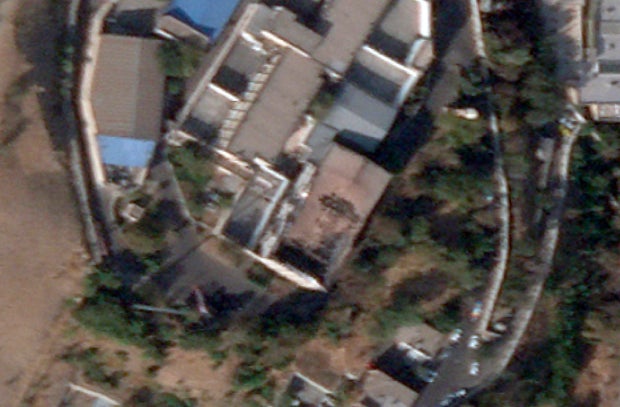Satellite photos analyzed Monday by the Associated Press showed a fire that burned through part of Iran’s notorious Evin Prison had damaged one of the largest buildings at the complex, as Iranian officials acknowledged that at least eight people were killed in the blaze. The satellite photos, taken on Sunday by Planet Labs PBC, showed the roof of a large building in the northern section of the prison burning away.
The prison holds thousands of people convicted by Iran’s opaque court system on charges ranging from theft to murder, but it also holds many political prisoners, including two U.S. citizens. CBS News learned that both of the Iranian-Americans held in Evin prison were safe as of Sunday, but one of them, Emad Sharghi, was moved to solitary confinement.

Sharghi is nearly halfway through serving a 10-year sentence he was given on espionage charges. His family and the U.S. government say he’s being held by Iran’s authoritarian regime as a political hostage, and his family called over the weekend on President Biden to push for his release. Shargi’s sister and daughter told CBS News’ Margaret Brennan on Sunday that they’d spoken with him directly.
Siamak Namazi, the other American citizen held at Evin, was also safe as of Sunday morning and had spoken to relatives in the U.S., his family’s attorney Jared Genser told CBS News.

The cause of the huge fire remained unclear on Monday. Iran’s government has claimed that it started during a fight among inmates, but critics dispute that, suggesting it was instead linked to the unprecedented wave of anti-government protests that have raged across Iran for a month.
Smoke billowed over the prison, gunshots echoed and projectiles were seen hurtling into the air over the prison in videos posted to social media on Saturday while, outside the prison, protesters continued chanting for the death of Iran’s supreme leader, Ayatollah Ali Khamenei.
Mahmood Amiry-Moghaddam, director of the Norway-based Iran Human Rights monitoring group, told CBS News on Monday that he believes Iranian officials may have instigated the violence at the prison.
“When you hear about Evin, you think about torture, forced confession and political dissidents,” he told CBS News. “What we have heard from prisoners and their families is that they [security personnel] have attacked one of the wards, thrown tear gas inside, there has been shooting inside the prison.”

Iran’s security forces have been accused by outside governments and groups for weeks of a violent crackdown aimed at quelling the protests, which have been reported in more than 100 towns and cities across the Islamic Republic.
The unrest, sparked by the death of 22-year-old Mahsa Amini, who’s family say she was killed in the custody of Iran’s morality police after being arrested for wearing an improper head covering, is unlike anything the country’s ruling clerics have faced since at least 2009.
Iran’s President Ebrahim Raisi has blamed the United States for the chaos in his country, as Iran’s leaders have done many times previously, calling America “the Great Satan.”
“They never take responsibility for anything bad that happens inside Iran,” said Amiry-Moghaddam. “I think this is what people have had enough of. We have a highly incompetent and repressive regime, never responsive to their own people, and of course they blame everyone else than themselves.”
People have continued to take to the streets despite the brutal crackdown, with women and girls often leading the charge. Their goal is to bring down the regime that seized power in the 1979 Islamic Revolution, and while that regime has put down violent unrest before, including the large anti-government protests in 2009, this time, it looks different.
“It seems people have lost their fear,” Amiry-Moghaddam told CBS News. “What Iranians have lived under the last 43 years has been a nightmare. I would say the countdown of the Islamic Republic has started.”





